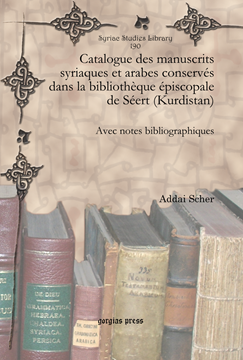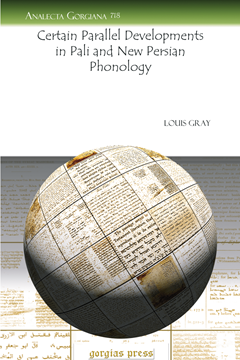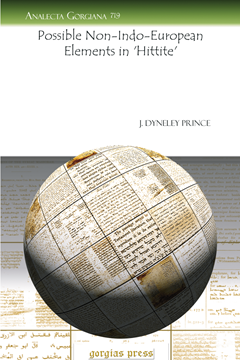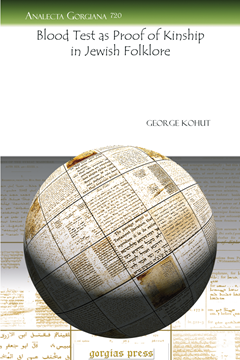Catalogue des manuscrits syriaques et arabes conservés dans la bibliothèque épiscopale de Séert (Kur
Avec notes bibliographiques
By Addai Scher
Series: Syriac Studies Library 190
ISBN: 978-1-61143-009-7
Addai Scher, the last bishop of Siirt (Seert), here describes the collection of Syriac and Arabic manuscripts of the episcopal library there, a total of 136 codices in various genres.
$116.00 (USD) $69.60 (USD)
A Hymn to Nergal
Series: Analecta Gorgiana 716
ISBN: 978-1-61143-010-3
The god Nergal had his residence at Cutha, according to numerous passages in cuneiform literature. The ancient king of Uruk, Singamil (ca. 2750 B.C.E.), was also a devoted adherent of the Nergal cult, and fostered his worship at Uruk itself.
$34.00 (USD) $20.40 (USD)
Certain Parallel Developments in Pali and New Persian Phonology
By Louis Gray
Series: Analecta Gorgiana 718
ISBN: 978-1-61143-012-7
Pali and New Persian are without influence on one another, yet they show a striking similarity in their development. All coincidences between the two languages are due to the operation of the laws of development which govern the Indo-Iranian languages.
$34.00 (USD) $20.40 (USD)
Possible Non-Indo-European Elements in 'Hittite'
Series: Analecta Gorgiana 719
ISBN: 978-1-61143-013-4
Prince believes that Hittite shows marked non-Aryan peculiarities. He attempts to examine some important points in the morphology of Hittite in order to determine whether or not some of the most salient forms are of non-Aryan, rather than Indo-European.
$34.00 (USD) $20.40 (USD)
Blood Test as Proof of Kinship in Jewish Folklore
By George Kohut
Series: Analecta Gorgiana 720
ISBN: 978-1-61143-014-1
Blood, among the Jews, possibly because it was held to be symbolic of the soul, was an object of sacred awe. The ancient practice of covenanting by means of blood is widely-practiced as a result of ethnic superstitions.
$34.00 (USD) $20.40 (USD)
Recent Discussions of Totemism
By Crawford Toy
Series: Analecta Gorgiana 721
ISBN: 978-1-61143-015-8
The meaning of the words “totem” and “totemism” have not been consented as of yet. However, totemism has been designated as an exogamous organization in which a clan is allied by an intimate and sacred bond to a natural object.
$34.00 (USD) $20.40 (USD)





